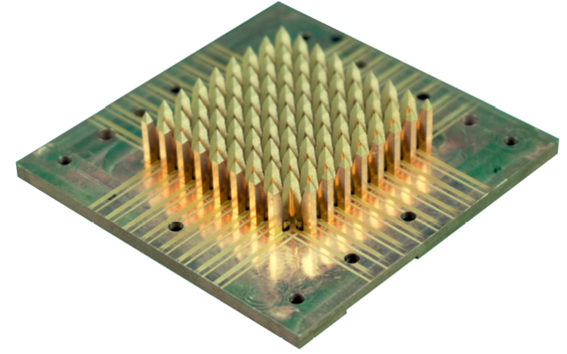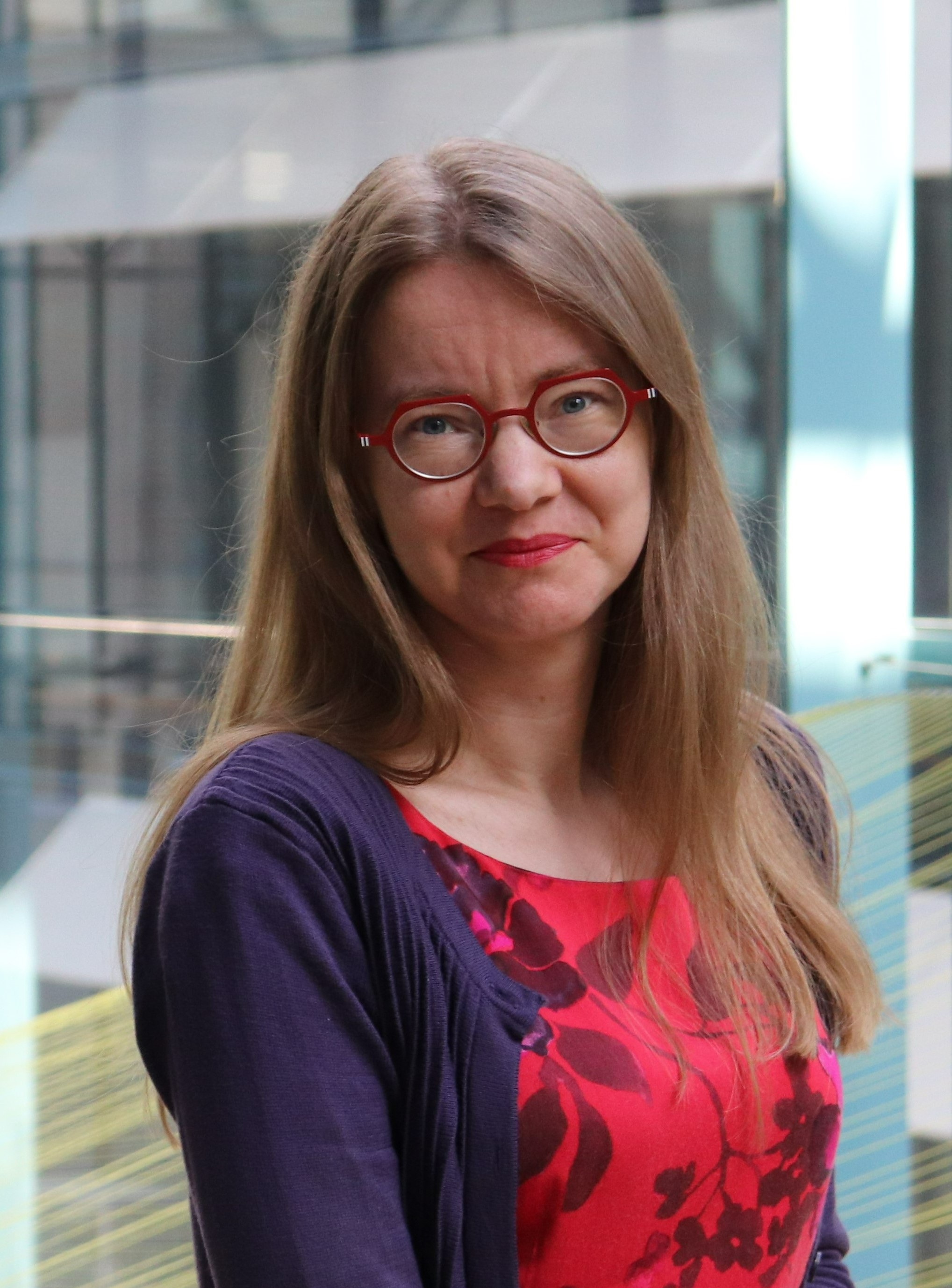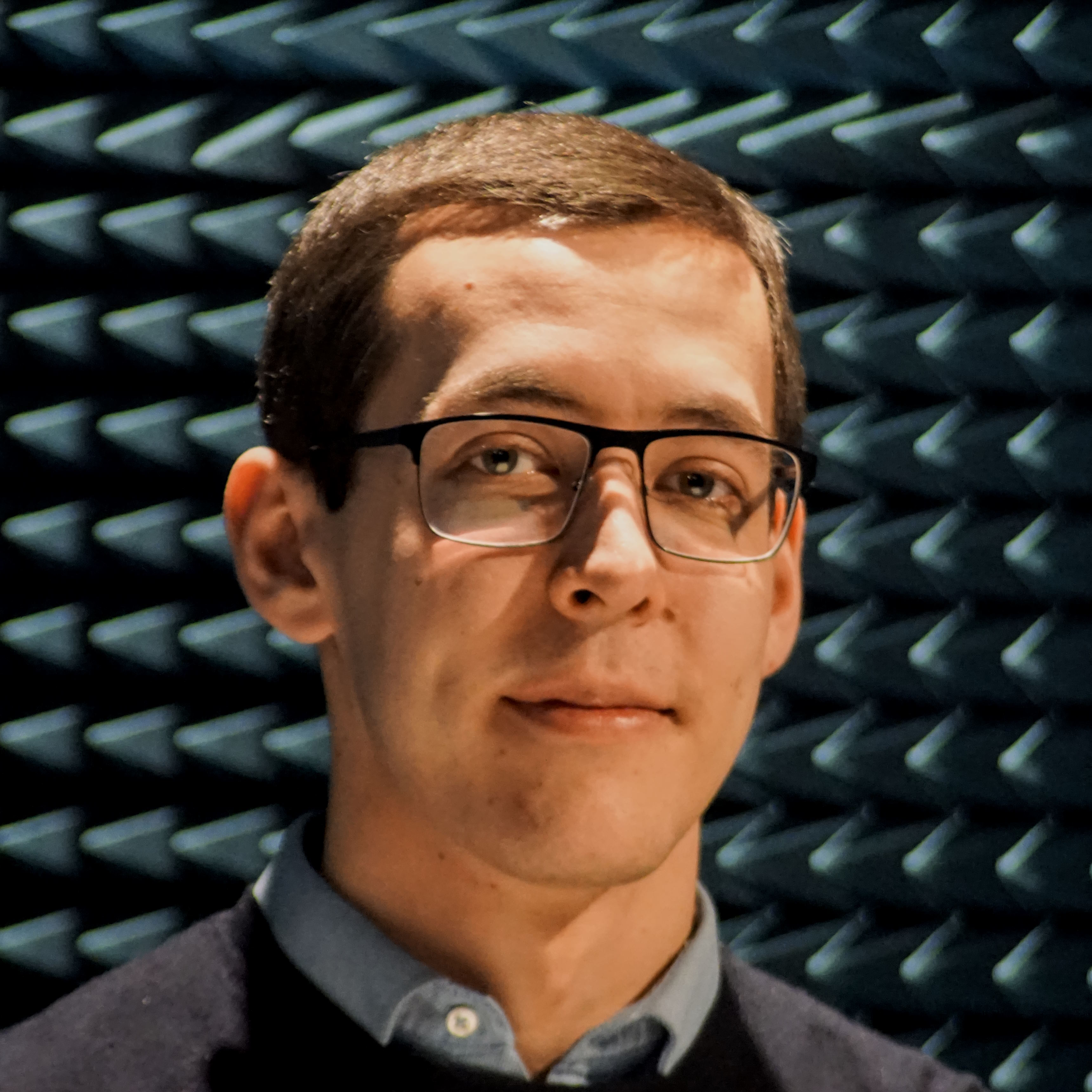Antennas and Wireless Sensors
(Figure: Dual-polarized beam-steerable millimeter-wave antenna array.)

We are surrounded by wireless devices and majority of the internet traffic goes through antennas. We develop antennas that produce radiation more efficiently, can focus the energy to the receiver, and can simultaneously utilize many propagation paths (MIMO antennas). Better antennas result into lower power consumption, longer range, better reliability and increased data rates.
There are three main research areas in the field of antennas and wireless sensors:
Current antennas of mobile phones can waste up to 99 % of available RF energy for heating up the user and the device. We study adaptive antennas consisting of many, collaborative radiating elements making it possible to adapt the antennas operation to the given frequency and mitigate losses due to the user. See a 2-minute youtube video on the concept (https://youtu.be/1IcNtoTL00k). We also develop beam-steerable mm-wave antennas for mobile devices. In particular, we study how these antennas could share the same volume with LTE antennas.
Compared to microwaves, mm-waves makes it possible to focus radio waves much better with antennas of the same size. We study how to best realize mm-wave beam-steerable antennas and our research is related for instance to wide-band arrays with wide beam steering range, mitigation of active reflection, integration of active electronics with passive antenna structures, usage of novel materials in mm-wave antennas and manufacturing of the antennas with 3D printing technologies.
We study RF-powered devices that can harvest the required energy from ambient radio waves and use the same waves for communication too. We focus our research in particular in adaptive antennas, power harvesters, modulators and sensors.
Group members

Jari Holopainen

Latest publications
Beam Steering Performance Improvements Using a Layered Permittivity Dielectric
Crack Stop as a Coupling Element Between an IC Chip and Antenna
Dual-Polarized Wideband Filtering Antenna Array Based on Stacked-PCB Structure
Optimization of Loads for Antenna-Based Scattering Systems Using Feedforward Neural Networks
Predicting the Bistatic Scattering of a Multi-Port Loaded Structure Under Arbitrary Excitation: The S-Parameters Approach
Curved boundary integral method for off-axis parabolic reflector analysis
Extended legality of curved boundary integral method
Calibration of a Two-Port Millimeter-wave Quasioptical Measurement System
Dual mirror optimized scanning for telecentric lens
Small On-Metal Passive UHF RFID Transponders With Long Read Ranges
Contact:
Associate Professor Ville Viikari
Email: [email protected]
Tel.: +358 50 4135 458
Postal address:
Department of Electronics and Nanoengineering
Aalto University School of Electrical Engineering
P.O. Box 15500, 00076 Aalto, Finland
Visiting address:
TUAS-building
Maarintie 8, 02150 Espoo
- Published:
- Updated: